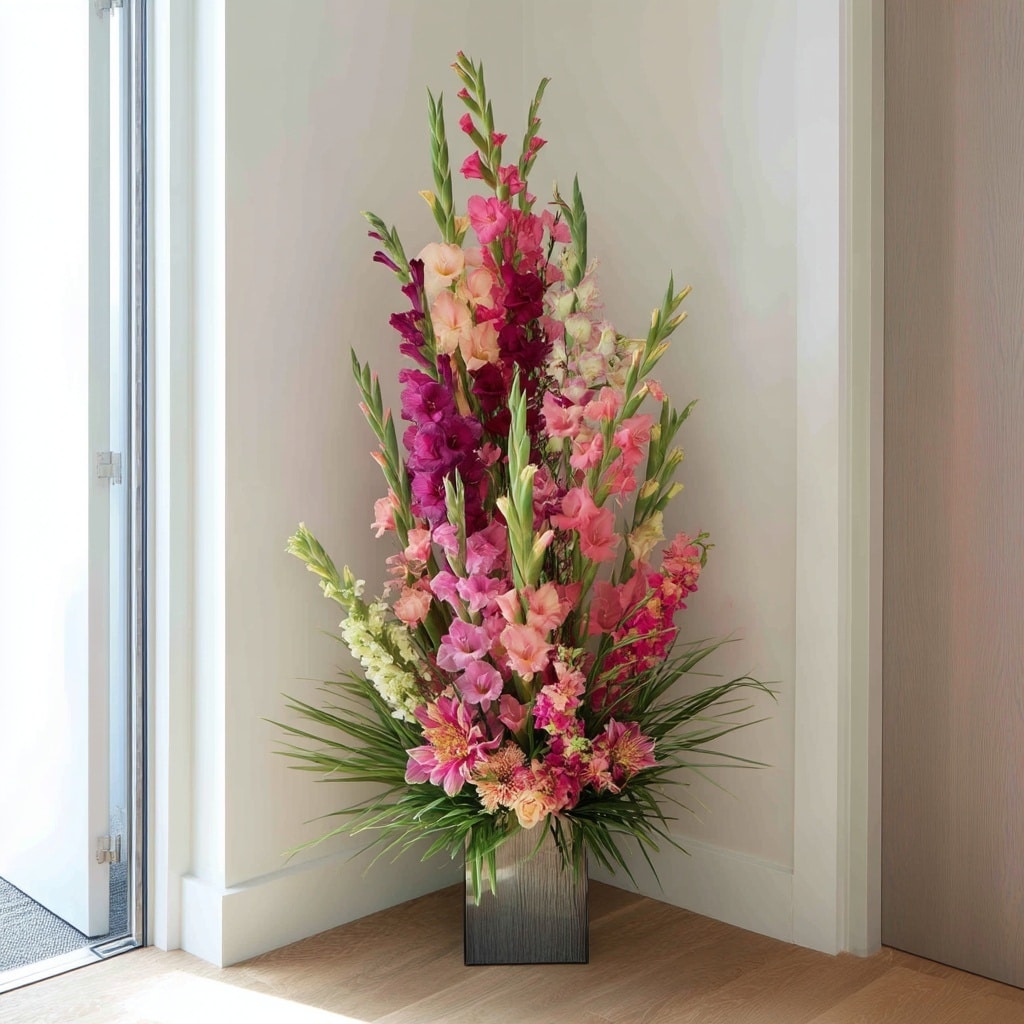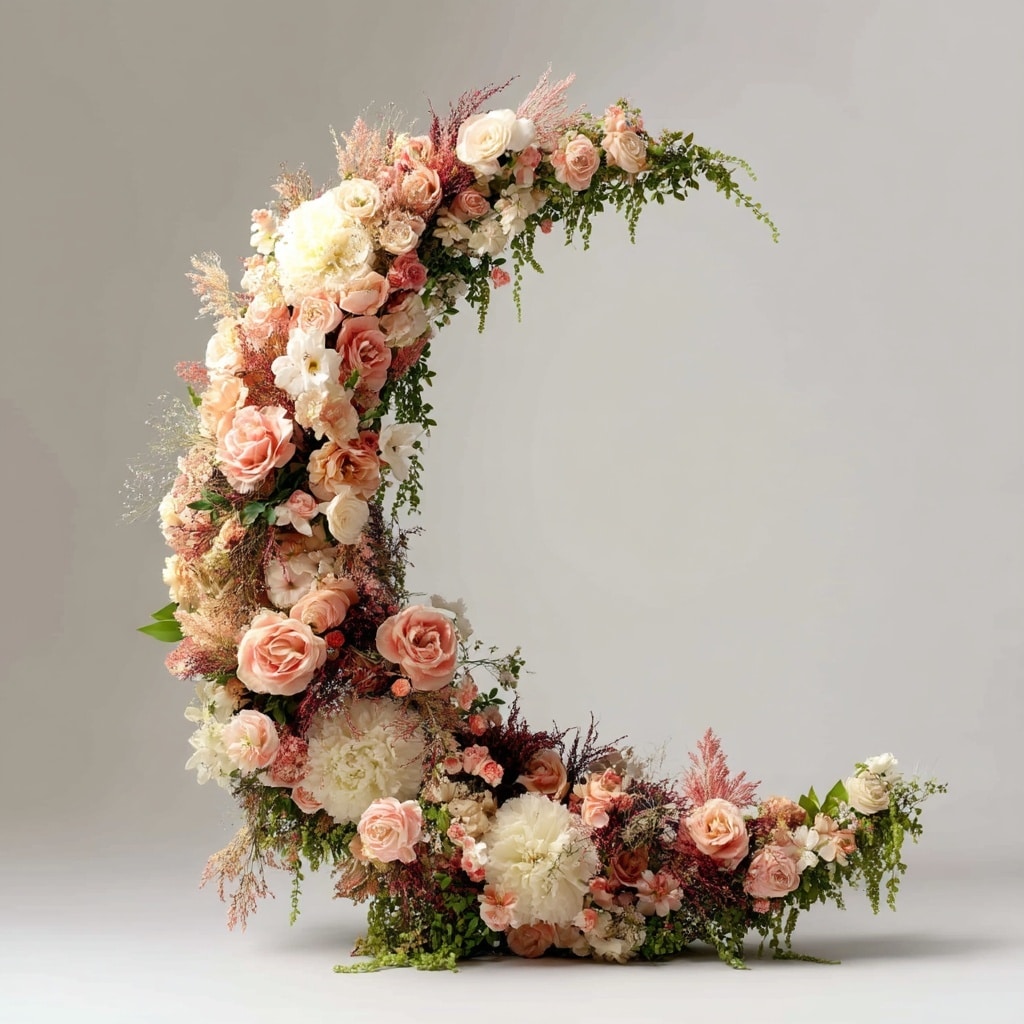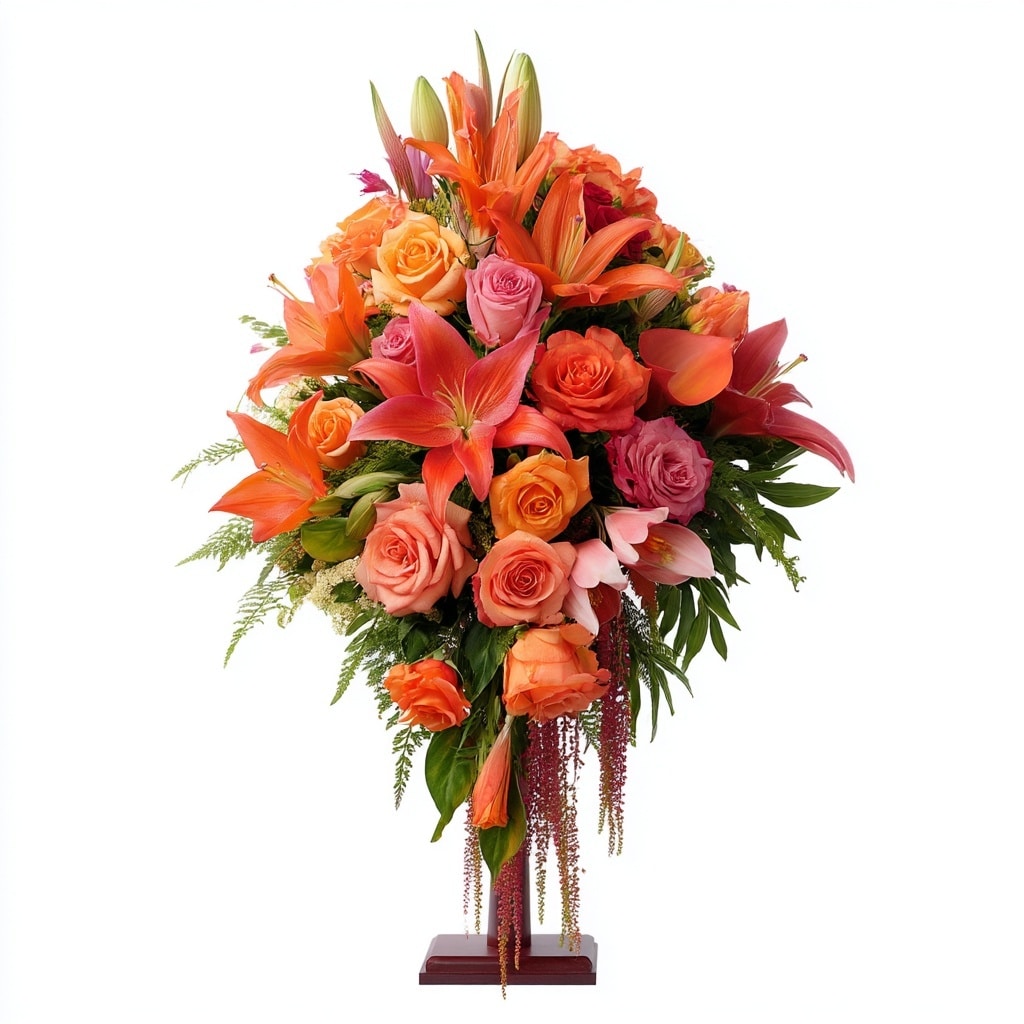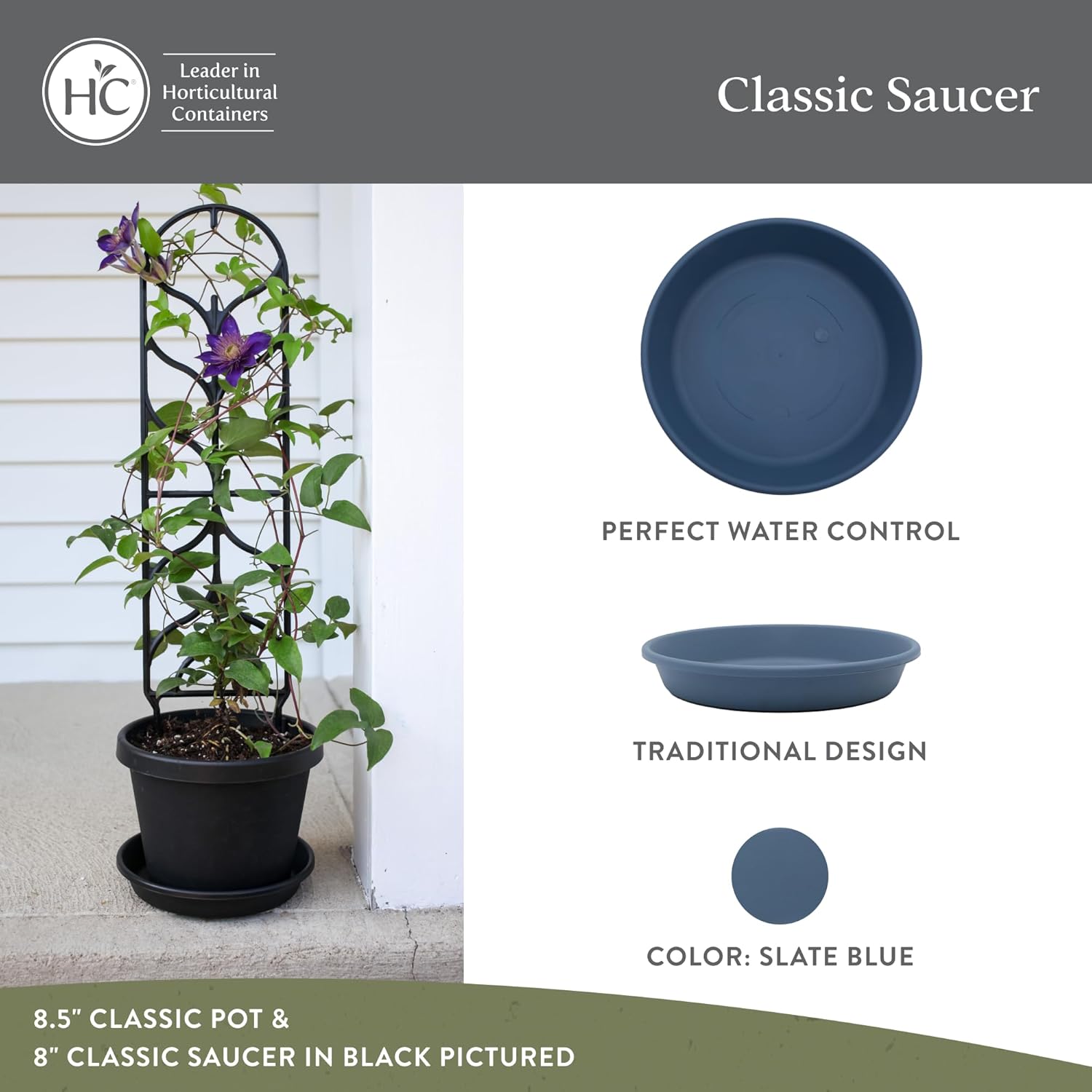Flower arrangements have long been a meaningful way to express emotion, enhance celebrations, and bring beauty into everyday life. Whether you’re planning a wedding, sending a thoughtful gift, or decorating for the holidays, the right arrangement adds instant charm and elegance. With so many shapes and styles available, it’s helpful to know which type suits each occasion best. From bold and structured to soft and romantic, flower arrangements come in forms that highlight the natural beauty of blooms while matching the tone of your event. In this guide, we’ll explore seven timeless styles that can elevate any gathering, gift, or space.
Table of Contents
1. S-Shaped Flower Arrangement
Elegant and dramatic, the S-shaped flower arrangement—also known as the Hogarth style—creates an eye-catching curve that flows like a ribbon through the display. This graceful shape symbolizes movement and balance, making it a favorite for grand events and formal celebrations.
To achieve the signature curve, florists use a mix of tall, medium, and cascading flowers, supported by curved stems and leafy fillers. The result is a dynamic design that draws the eye upward and downward in a continuous motion. Perfect for entryways, gala tables, or sophisticated ceremonies, S-shaped arrangements make a strong visual impact while maintaining softness and elegance.
2. Oval Flower Arrangement

The oval flower arrangement is a timeless favorite that offers fullness, symmetry, and classic beauty. Designed in an elongated, rounded shape, this style works well for centerpieces, altar displays, and formal settings where balance and richness are desired.
Florists trim stems and foliage to fit the smooth oval outline, often layering flowers tightly to create a dense, lush appearance. This arrangement allows for a mix of bloom sizes and colors, creating depth without overwhelming the eye. Whether used at weddings, memorials, or upscale dinner parties, oval arrangements provide a sense of refinement and are easy to adapt to any color palette or theme.
3. Horizontal Flower Arrangement

Horizontal flower arrangements are ideal for table settings, especially when you want beauty without blocking conversation or views. Designed with a low, wide profile, this style stretches across the surface in a straight or zigzag pattern, making it perfect for dining tables, mantels, or sideboards.
Florists typically use flowers with soft textures and subtle fragrances—such as daisies, hydrangeas, or lilies—while avoiding blooms that appear too bulky or upright. Foliage is used to extend the arrangement outward and fill in gaps naturally. The result is a balanced, visually calming display that works well for both casual gatherings and formal meals.
4. Vertical Flower Arrangement

A vertical flower arrangement adds instant height and elegance to any space. With its upright shape and layered composition, this style draws the eye upward, making it ideal for corners, entry tables, or event stages where you want to create a strong visual presence.
Florists use tall-stemmed flowers like gladiolus, delphiniums, or snapdragons, often mixed with medium and shorter blooms for contrast. Color gradients or bold combinations help accentuate the vertical lines. This type of arrangement is especially popular at weddings, receptions, and milestone events, where its dramatic structure brings sophistication and dimension to the décor.
5. Fan-Shaped Flower Arrangement

The fan-shaped flower arrangement is a structured yet visually open style that resembles a hand-held fan. Flowers and foliage are carefully positioned to radiate outward from a central point, creating a semi-circular spread that’s both elegant and symmetrical.
This arrangement often combines blooms of varying sizes with leafy fillers to fill gaps and maintain shape. It’s a popular choice for receptions, public ceremonies, and gifts, offering a sense of volume without being overpowering. Because of its wide, balanced design, the fan shape is especially effective when displayed against walls or as a backdrop on display tables.
6. Crescent Flower Arrangement

The crescent flower arrangement, shaped like a half-moon, brings a graceful, flowing energy to floral displays. Its curved form makes it ideal for intimate celebrations, cultural events, or as a thoughtful gift with artistic flair.
To create the signature arch, florists use flexible stems, cascading blooms, and trailing foliage arranged to form a sweeping curve. The design often features asymmetry, with one side slightly fuller than the other, adding natural movement to the piece. Perfect for baby showers, Ramadan gatherings, or minimalist interiors, crescent arrangements blend elegance and serenity in a compact, memorable form.
7. Triangular Flower Arrangement

The triangular flower arrangement is a structured, formal design that’s especially popular for ceremonies, receptions, and altar displays. As the name suggests, flowers are arranged to form a triangle, with the tallest bloom placed in the center and shorter stems descending outward on both sides.
This shape creates a sense of stability and direction, making it perfect for focal points. Florists often use a mix of large statement flowers, mid-sized fillers, and greenery to give depth while maintaining clean lines. Whether it’s used for weddings or memorials, the triangular arrangement offers both presence and balance, suitable for meaningful occasions.
Conclusion
Flower arrangements are more than decorative pieces—they’re an expression of emotion, style, and celebration. Whether you choose the structured form of a triangular design, the softness of a crescent, or the grandeur of an S-shape, each arrangement style serves a unique purpose. By understanding these seven popular types, you can select the perfect floral display for any occasion, from casual gatherings to elegant events. The right arrangement doesn’t just complement the moment—it helps define it.






